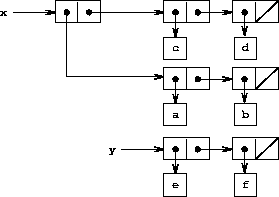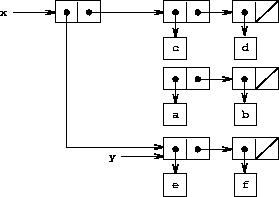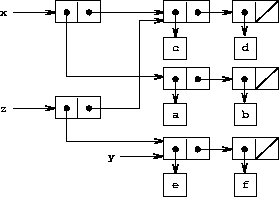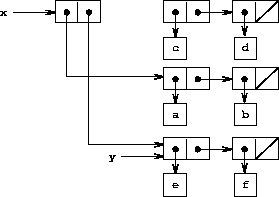Namelos / SICP 3.3 Modeling with Mutable Data
2018-10-09
cons, car, and cdr can be used to construct list. However they are incapable of modifying list structure.



Exercise 3.12
The following procedure for appending lists was introduced in section 2.2.1:
(define (append x y)
(if (null? x)
y
(cons (car x) (append (cdr x) y))))Append forms a new list by successively consing the elements of x onto y. The procedure append! is similar to append, but it is a mutator rather than a constructor. It appends the lists by splicing them together, modifying the final pair of x so that its cdr is now y. (It is an error to call append! with an empty x.)
(define (append! x y)
(set-cdr! (last-pair x) y)
x)Here
last-pair is a procedure that returns the last pair in its argument:(define (last-pair x)
(if (null? (cdr x))
x
(last-pair (cdr x))))Consider the interaction
(define x (list 'a 'b))
(define y (list 'c 'd))
(define z (append x y))
z
(a b c d)
(cdr x)
<response>
(define w (append! x y))
w
(a b c d)
(cdr x)
<response>What are the missing <response>s? Draw box-and-pointer diagrams to explain your answer.